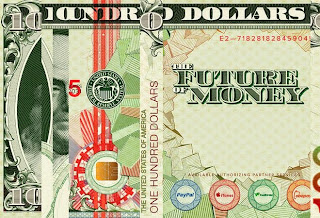Skip to main content
Not Making Much on Money Kept at Your Bank-It could change by You Paying the Bank Instead

- I hear people complaint that they don’t make any money on checking or savings any more. How about having to pay the bank to keep your money with them? We were told by the banks that they wanted our money. Think about all those commercials we have been watching and listening to since we were growing up. It’s true they want your money, what they didn’t tell you and me is that they want to keep our money…for good!
- The banks call it “lazy behavior” You and I will call it something else.You can make your own name! ‘Lazy Behavior’ Bank customers could look forward to being charged to keep their money in U.S. banks.
- That’s the latest threat coming out of Wall Street, according to a report in the Financial Times, as financial institutions look to combat a possible interest rate cut from the Federal Reserve on its bank reserves.
- { Plain language from adamfoxie: The feds are making the banks keep what they think is too much money to cover their transactions. The feds pays them the interest rate, which varies sometimes. The feds have lowered interest rates to help the economy by making it cheaper for business to borrow money. Plenty of money around to keep things functioning well. The banks don’t have a problem with that but since the feds want to lower the rates more, the banks will make less money on the supply of money that they have, thus wanting to charge somebody for making a bit less profit. That someone is always the consumer since it’s the one with less power to kick back. As for the term ‘Lazy” I think is the wrong term, so I will let you give it your own name but lazy is not so bad a name, since that’s the name we give someone who doesn’t want to work for their money. I’m sure some will start calling it pillow talk or Mattress investment }
- This latest potential step would be a hit to depositors, already earning close to zero interest on checking and savings accounts.
- But the banks say it’s a side effect of the Fed’s quantitative-easing strategy and its eventual tapering of its asset purchases of $85 billion a month, which has created high liquidity within banks. The report cited executives at two of the top five U.S. banks, who said a cut in the 0.25 percent rate of interest on the $2.4 trillion in reserves they hold at the Fed would lead them to pass on the cost to depositors.
-
- If you look at the chart, the amount of cash held at the Fed used to be negligible but is now in excess of $2.3 trillion. The logic is that the Fed wants the banks to stop parking their “lazy cash” at the Fed and start doing something with it, say experts.
-
 FederalReserve Bank of St. Louis
FederalReserve Bank of St. Louis
- “From the Fed’s point of view, by discouraging banks from leaving their excess cash at the fed, they are encouraging banks to buy securities in the market (the same as the what they are doing with quantitative-easing purchases) or to go out into the market and make loans,” said Joshua Siegel, managing partner and CEO at StoneCastle Partners.
- And banks, given their current capital requirements, can be a little riskier, and funds being deployed back into the market would be good for the economy, noted Siegel.
- “My understanding is that banks are supposed to lend to make profit,” said Brad Hintz, analyst at Alliance Bernstein. “And not just recycle cash to the Federal Reserve.”
- Savings accounts don’t actually cost that much to operate for banks, but checking accounts do actually cost a lot of money and have a great benefit to consumers. While customers do pay for these via minimum-balance requirements, when there is a low-interest environment, it’s not much revenue for banks.
- In the last few years, the debit-fee legislation coming out of the Durbin Amendment as part of the Dodd Frank Act has limited transaction fees imposed on merchants by debit card issuers. That has effectively hit consumer-banking revenues pretty hard, say analysts.
- But the interest on excess reserves was a temporary stop-gap measure allowing banks to earn interest by holding money at the Fed. What the Fed is now saying is that it was never meant to be permanent.
- – Sital S. Patel
- – Follow The Tell on Twitter @thetellblog
- Adam Gonzalez, Publisher
FederalReserve Bank of St. Louis


Comments